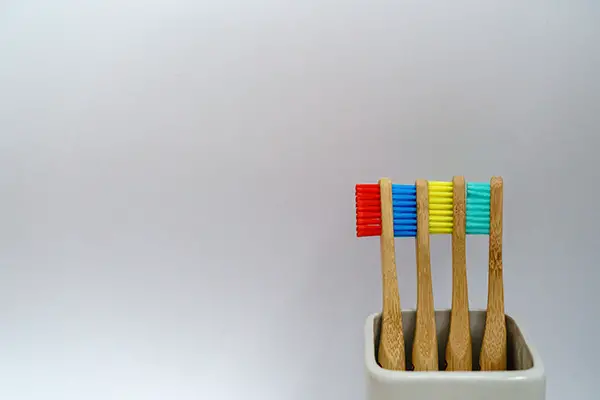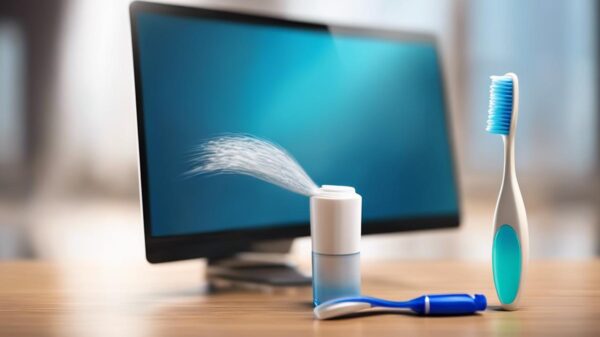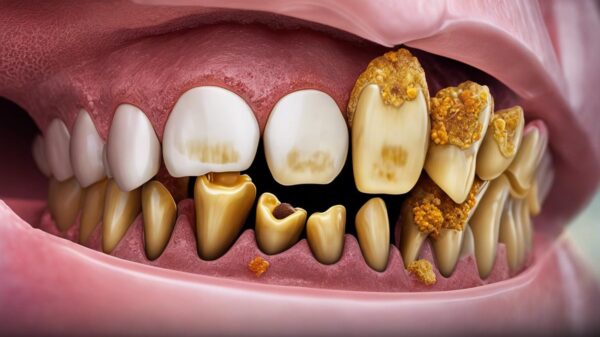Common Reasons Tooth Sealants Fail
When it comes to dental work, you want to be sure you are making the right decision for your health. Often, deciding on getting sealants put in your teeth can lead to a different result than expected. Therefore, I was able to find dental-related reasons why your sealants may fail and how to take care of your sealants so they do not fail.
So, why do sealants for teeth fail? Your sealants may fail due to your dentist not knowing how to apply them, not properly checking them after they have been filled, and not trimming the teeth around the sealant. In addition, you can allow your sealants to fail by using cheap toothpaste, using children’s toothpaste, using expired toothpaste, using toothpaste with low fluoride levels, and using toothpaste that has whitening agents in it.
Keep reading to learn more about dental sealants and the top reasons that they fail.
What Are Dental Sealants?
A dental sealant is a thin plastic coating that covers the biting surfaces of the back teeth, where most decay occurs. The sealant covers the grooves, fissures, and chewing surfaces to seal out plaque and bacteria and prevent decay.
They are thin and translucent so do not affect the appearance of your child’s smile. Tooth sealants often referred to as “white fillings” are used for the prevention of dental cavities.
Dental sealants are a plastic material that is applied to the chewing surface of teeth, usually back molars below the biting edge, where tooth decay is likely to begin, to prevent decay formation. They mostly appear as a white line on the teeth.
Purpose of Tooth Sealants
Sealants are a preventive dental treatment that helps keep your child’s teeth decay-free and healthy by sealing out plaque from being trapped in pits and fissures of tooth surfaces where it can cause cavities. Sealants only benefit the chewing surface of back teeth where there is room for food to get caught, such as molars and premolars (back teeth).
A sealant is a thing plastic coating that is applied to the chewing surfaces of back teeth. They can be applied to the front of a tooth for cosmetic reasons, but they do not prevent cavities on the part of a tooth that you see in your smile. Sealant material covers the grooves and depressions of the chewing surfaces so food cannot get caught in them.
How Long Do Sealants Take?
Sealants are most commonly applied to primary (baby) molars that haven’t yet come in (erupted). The application takes only a few minutes per tooth. However, the sealant material needs to be left on the teeth for several hours so it can form a tight chemical bond with each tooth’s enamel.
Tops Reasons Sealants Fail
There are several reasons your sealants may fail as a result of either poor dentistry or poor personal care. Here are some of the top reasons:
1. Your Dentist Does Not Apply Sealant Properly
To make sure your teeth are protected from cavities, you need to apply sealants on the surface of the tooth. If a person is not skilled enough in applying it then he or she may end up applying it unevenly and fail to give strength to the teeth.
This is why it is essential to go through the tips on how to apply sealants for teeth to get maximum benefits. This will help you save money and also avoid any kind of discomfort after applying the sealant. If you are not sure about how to apply it, you can contact your dentist.
2. Your Dentist Does Not Check Sealant Application
Sealants are designed to protect teeth from cavity formation and other problems related to teeth. However, you must check whether the sealant has shifted or not. If you fail to do this then there’s every chance that it might lead to a breach in it and hence a risk of cavities.
3. Applying Sealant Without Trimming Teeth
Usually, sealants are applied after the teeth have been trimmed. If you apply them before trimming then there’s every chance that it might get stuck with the tooth and will not give any protection from cavity formation.
Always make sure that you apply sealants for teeth after the trimming process is complete. This will help avoid any kind of pain or discomfort while applying or wearing it along with your other dental care procedures.
4. Using Cheap Toothpaste with Sealants
Sealants for teeth are a great way to make your tooth wearable. They can be used with any kind of toothpaste and do not affect their usage negatively. You should go for the most effective brands to get desired results from sealants.
If you use cheap toothpaste then it will wear off easily and you will have to reapply it more often. It is also possible that the sealant might wear off during brushing. Make sure that you include sealants in your dental care program and use high-quality toothpaste with them.
![]()
5. Using Old or Stale Toothpaste
If you are using old or stale toothpaste then it will not give desired results. Sealants are for protecting teeth from cavities. You will be wasting your money if you use old toothpaste on them. Not only that, but it can also lead to some discomfort and pain after using the sealant.
![]()
6. Using Toothpaste with Low Fluoride Levels
Toothpaste is an essential part of your dental care program including sealants for teeth. In the same way that you should not use low-quality toothpaste, you should also avoid using it with low fluoride levels.
This is one of the main reasons why toothpaste formulated especially for children does not include high fluoride content in them. They are still developing and might get damaged or affected by high fluoride levels.
Usually, the low fluoride level toothpaste is used for adults and their dental care program does not include sealants. However, it is still important to avoid using such toothpaste on the teeth with sealants since they will lead to cavities or other issues related to teeth in the future if you switch over to normal kinds of toothpaste.
7. Using Toothpaste for Children
As mentioned before, sealants are not compatible with children’s toothpaste since they have low fluoride levels. This is the reason why it is important to buy separate toothpaste for applying on teeth with sealant. If you use children’s toothpaste then your smear layer will get worn off and the toothpaste will not give you maximum protection.
8. Using Toothpaste with Whitening Agents
Whitening agents present in your toothpaste can damage the sealant over time and lead to its failure after a short period. If you want to use whitening toothpaste then it is recommended that you apply sealants on an average of three times a year.
What to Expect During Your Sealant Appointment
During check-ups for your child, our dentist may recommend sealants if he or she notices that there might be a high risk of tooth decay developing in deep depressions on the chewing surfaces of back teeth. Once applied to your child’s teeth, a sealant material forms a tight chemical bond with the enamel surface.
The sealant fills in the grooves of a tooth and becomes part of the tooth structure, so unlike fillings, it will not need to be replaced. Sealants protect teeth from decay long after they are applied.
Dental sealants can only be used on back teeth (or molars and premolars). This is because they are the only teeth with deep enough grooves for sealant material to fill. They cannot be used on front teeth because they do not have deep enough grooves. Dentists will sometimes place a permanent plastic restoration on the biting surface of an upper or lower front tooth if it has one or more deep grooves.
What Are Sealants Made Of?
Sealant material is a tough plastic resin that forms a tight chemical bond to the enamel surface of teeth. It is safe and very durable and can last several years or longer depending on your child’s chewing habits.
Many children may already have sealants when they visit our dentist for regular check-ups. Parents often ask why their child does not have the sealants even though they have noticed a groove in his or her teeth.
If a groove is present, there is a high chance of decay development in it. Therefore, your dentist will recommend sealant application on those teeth if deemed necessary. Sometimes these grooves are barely visible and may appear only to the trained eye of a dentist.
Establishing Healthy Dental Habits
To best protect your child’s teeth, our dentist may also recommend that you practice these healthy habits at home:
- Professional dental cleanings are important for children with sealants.
- Good daily care at home (including brushing and flossing techniques, sealants can provide an added measure of safety against tooth decay).
Oral Care After Getting Dental Sealants
Once applied, the sealant is fairly easy to maintain. Your child should brush his or her back teeth when he brushes the front ones. However, brushing with fluoride toothpaste may not be enough to prevent cavities if your child sucks on thumbs or eats a lot of sticky or sugary foods.
Sealants can wear off over time. Dentists recommend that you bring your child in to the office every 6 months for a dental cleaning to remove plaque and tartar buildup below the sealant.
Sealants are very tough and it takes professional tools to ensure thorough cleaning of teeth. These cleanings are important because they allow the dentist to remove plaque and tartar that would otherwise cause decay or cavities.
The sealant may not be able to withstand strong forces. Dentists also recommend that you avoid activities like chewing ice or pencils. These act as “stressors” on teeth and could break through the sealant layer, allowing cavity-causing bacteria to colonize below the tooth surface.
Sealants are also considered permanent, so dentists recommend that you avoid chewing on hard objects or brushing teeth with a sharp or abrasive toothbrush.















